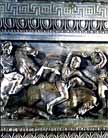Figure 4: Minoan double bladed axes, or labrys (Amos & Lang 16) [not
the original picture I used, but it illustrates how the double-headed
axe looks well enough]. The Minoan merchant fleet was well-armed and
quite capable of defending itself, to the extent that it dominated the
Mediterranean of the time. However, this does not seem to have led to
a need to conquer ever-larger territories, nor a glorification of war,
but rather simply increased trade and better technology.
 from this site:
from this site:
Figure 11: A view of the Acropolis of Athens. It was initially a
fortress, and became the center of religious life of the city-state. It
contains a multitude of large, impressive temples: the Parthenon
(dedicated to Athena), the Erechtheum (named for Erechtheus, legendary
founder of the city), the Propylaea, and the temple of Athena Nike.
The defensive walls still stand (Grimal, ed. 170).
 from the
Perseus
Project;
from the
Perseus
Project;

 from
this site
from
this site
.
Figure 18: "Dance of Priestesses at a Sacred Tree," as depicted on
a gold ring. Although the ring was found at Mycenae, it closely
resembles a Minoan religious scene. Note the "lamenter" (?), the
dancer, the male acolyte pulling the branches of a fruit laden tree
downwards, and the ubiquitous crescent moon. Are they in a plowed
field? (Goodrich 89).
Figure 19: "Three priestesses as elaborately gowned as possible,
wearing what appear to be wrapped skirts or wide pajamas that fall in
tiers and are made of stiff brocaded fabrics like taffeta or heavy,
gnarled wools. Again their torsos are bare, as are their feet. ... They
bear gifts of long-stemmed water plants. ...under a tree heavy with
fruit... [I]n her raised left hand the [priestess holds] the instruments
of the ritual, and in her right hand two stems of another water lily in
bud. Ripe figs on small leafy branches decorate the scene on the left.
The central object is the sacred labrys or double ax of Minoan Crete.
This symbol remains unclear in its meaning... [It] may be an aniconic
representation of the absent Mother Goddess herself. ... The long stem
of the sacred lotus reaches far down into the earth and through the
water, like an umbilical cord. ... Above them all shine the full-rayed
sun of summer and the moon in her last quarter. They are separated from
earth and the elegant priestesses by a wavy band of cloud (Goodrich
86-95)."
 from the slide lectures found at this
site.
from the slide lectures found at this
site.










 from
this site.
from
this site.









